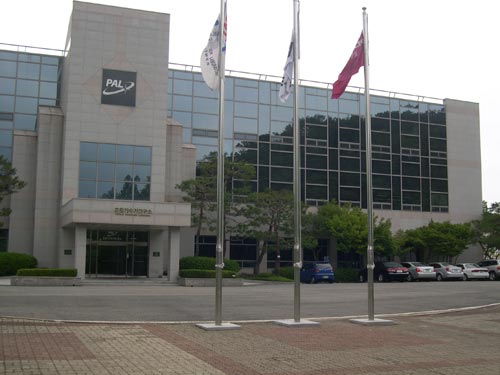
The Pohang Accelerator Laboratory
By Michael Banks
The number of synchrotrons in the world seems to be increasing with every month that passes by. Indeed, only a few months ago the Shanghai Synchrotron Radiation Facility China started experiments, closely followed by the PETRA III light source in Hamburg, Germany – adding to the 50 or so light sources operational worldwide.
Synchrotrons are used by researchers for a range of experiments in everything from condensed-matter physics to biomedicine by providing radiation from the infra-red to hard X-rays that can be used to solve protein structures and study quantum dots.
I visited South Korea’s only synchrotron, the $270m Pohang Accelerator Laboratory (PAL), which is on the Pohang Univeristy of Science and Technology (POSTECH) campus located in the South East of the country.
Opened in 1995, PAL is a 2.5 GeV light source that can house up to 27 beamlines around its 200m circumference.

A public-private initiative. On the left is POSTECH’s first president, Hogil Kim, and on the right is the former chairman of POSCO, Tae-Joon Park.
Interestingly, I learned that PAL was built with both public and private funding. A local company, POSCO, which is now the world’s second largest steel manufacturer, funded the synchrotron with $190m, with the remainder coming from the Korean government.
PAL is open to scientists from other countries, but most of the experiments are carried out by scientists in Korea. Research carried out at the synchrotron now leads to over 8000 published papers every year with around 60% of them in international journals.
Researchers at POSTECH, which operates and owns PAL, are now hoping to upgrade the synchrotron to increase the number of beamlines as well as increasing its energy to 3 GeV. If the Korean government funds the upgrade it will begin construction late next year
South Korea also has other ambitious plans for an X-ray free electron laser facility — so-called fourth generation light source — that is only just in the proposal phase. If it is built then it would be situated next to PAL on the POSTECH campus making Pohang a leading centre for research in East Asia.



